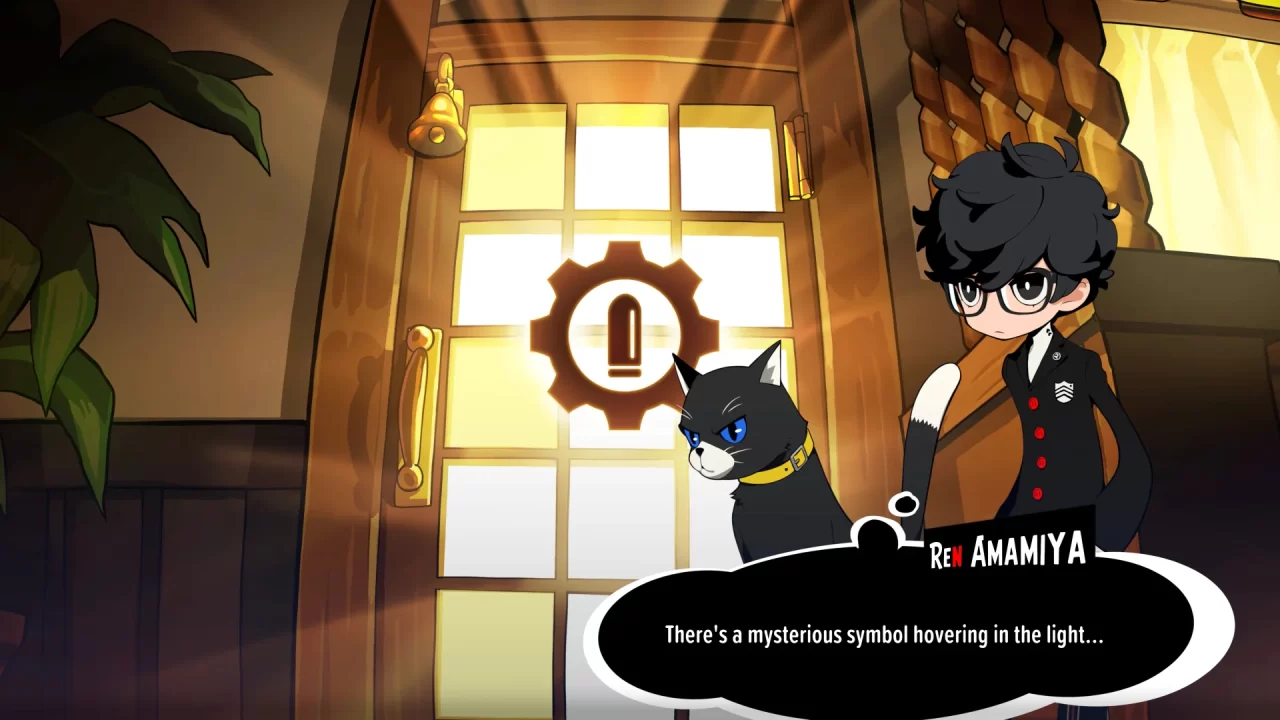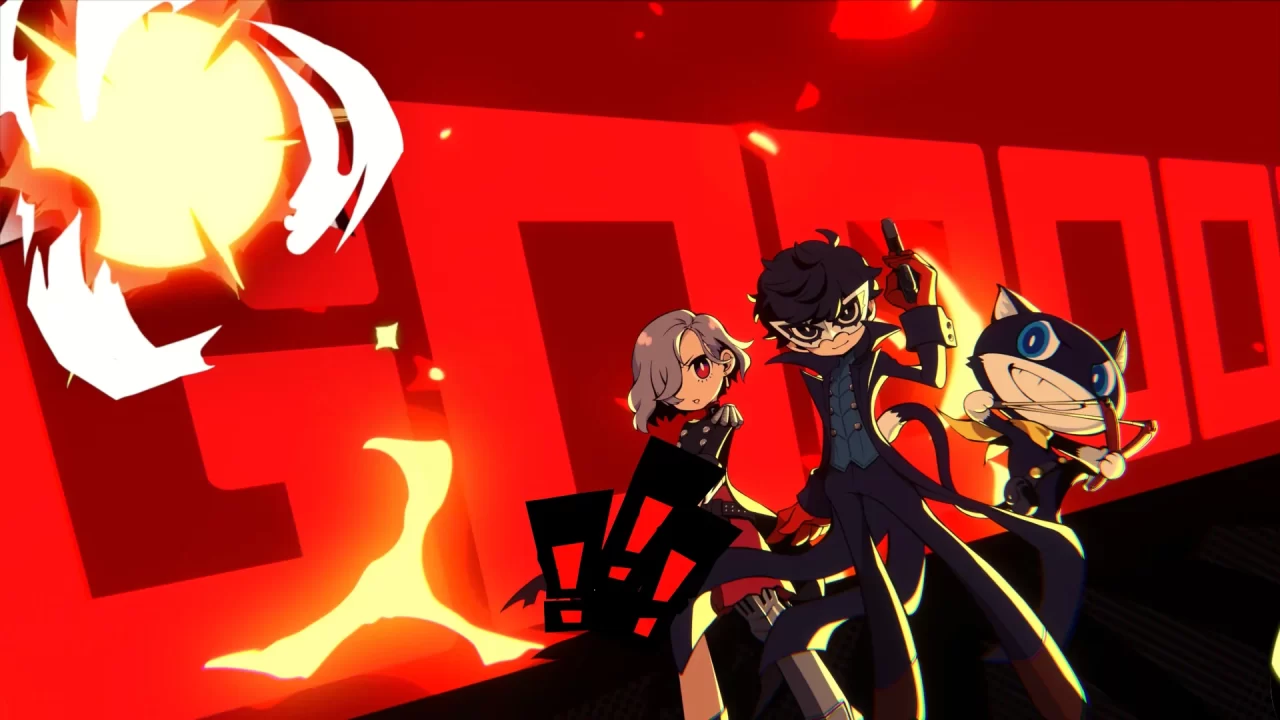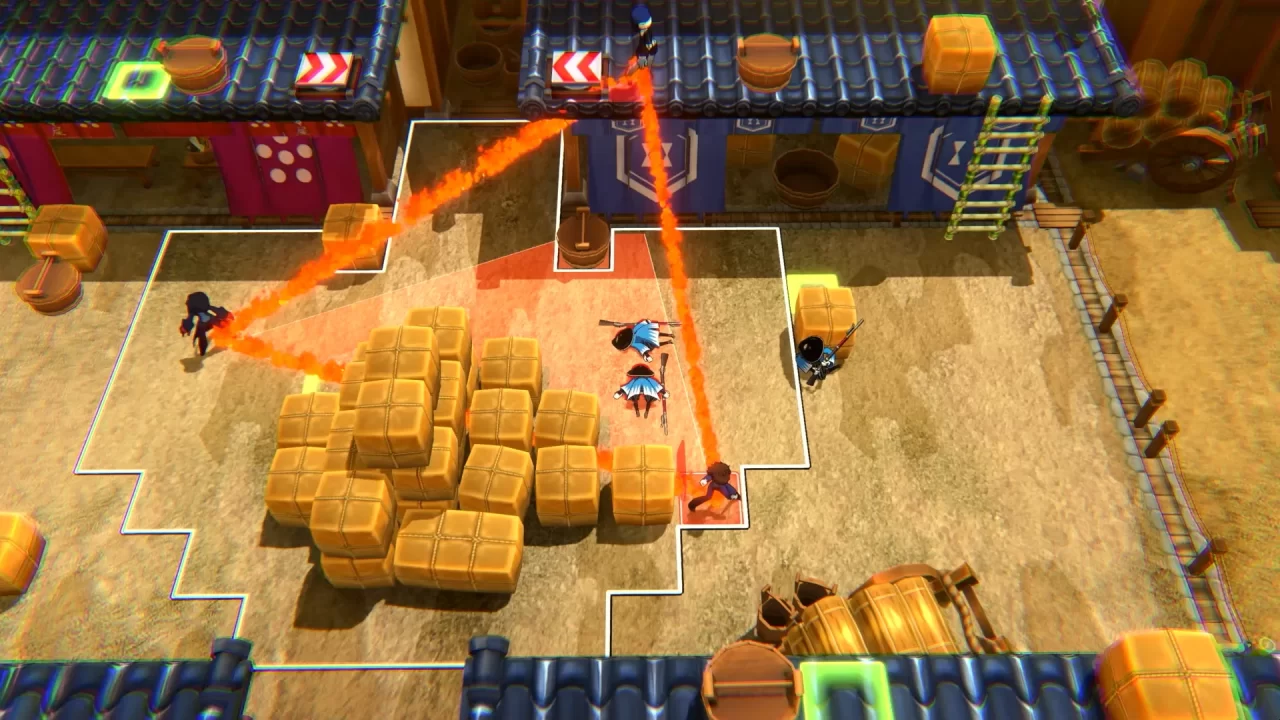The release of Persona 5 has defined Atlus for nearly a decade. The game became a mainstream hit, reignited passion for turn-based RPGs, and endeared a whole new generation of players to its iconic cast of characters, the Phantom Thieves. As such, spin-off titles were sure to follow, and Persona 5 fans have received a bevy of side adventures with new stories, mechanics, and presentation styles. Whether that’s grid-based dungeon crawling with super-deformed character designs in Persona Q2, fighting off waves of enemies in real-time musou-style combat in Persona 5 Strikers, or even heating up the dance floor in Persona 5: Dancing in Starlight, the Phantom Thieves have pretty much done it all.
Atlus once again draws from the Persona 5 well, this time leveraging the studio’s extensive experience with strategy RPGs to deliver a turn-based tactics game in a new art style that falls somewhere between the original and the super-deformed look of Persona Q. Unlike previous Persona series spin-offs, Persona 5 Tactica seeks to tell a deeply personal and richly thematic narrative alongside this gameplay shift, following some of the themes and ideas present in the original title and exploring them with new framing. While I appreciated the game’s renewed focus on narrative and social commentary often missing in the Persona side games, Persona 5 Tactica feels like a game at odds with itself, confused in what it wants to say and lacking in mechanical depth.
Persona 5 Tactica follows the Phantom Thieves as they are hanging out in Leblanc on a snowy day, the news station abuzz in the background covering a story about a missing Diet member named Toshiro Kasukabe. They are suddenly pulled into a new Metaverse realm themed after the French Revolution. They stumble upon some strange, diminutive creatures (referred to as Citizens) being oppressed by military forces called Legionnaires under the command of a cruel tyrant named Marie, and become embroiled in the conflict between Marie’s forces and the Rebel Corps led by a young woman named Erina. Upon joining Erina, the Phantom Thieves rescue that very same Toshiro Kasukabe who had gone missing in the real world, except he is suffering from amnesia. This Metaverse is constructed entirely inside of Toshiro’s mind, ruled by domineering figures from Toshiro’s past, with each kingdom and its Citizens themed around a different oppressive figure and traumatic event in Toshiro’s life. By leading the revolution against each of these figures, Toshiro slowly regains more of his memory and learns to take a stand and fight for what’s right.
This setup is quite intriguing, as it’s the inverse of the mind palaces from the original game. Rather than entering inside a villain’s mind as vigilantes seeking to force them to admit their crimes and bring them to justice, this time the Phantom Thieves have entered Toshiro’s mind as comrades in a therapeutic role, teaching him to stand up for himself and rebel against the expectations and demands those in authority have placed upon him. As a character study, the narrative is quite successful, and Toshiro’s development and relationship to Erina and the various Tyrants carries quite a bit of emotional weight. By the end, I was heavily invested in Toshiro’s journey, empathetic to all he had suffered, and motivated to help him change his life.
Unfortunately, such a personal focus on these new characters doesn’t leave much room for the Phantom Thieves, and they are along for the ride in Toshiro and Erina’s story for most of the game’s runtime. There are a handful of nice character moments sprinkled throughout as Toshiro’s past coincides with the original cast’s own struggles. (Toshiro and Futaba share a similarly complicated past with their mothers and bond over that shared pain, for example.) For the most part, the Phantom Thieves are only there to do the fighting and have back-and-forth banter in the game’s lighter moments. It feels like a missed opportunity, and it’s especially jarring how little the events of Persona 5 Royal factor in for the main characters, especially the glaring absence of Kasumi and Akechi. There is a DLC episode that includes these characters and presumably builds on the events of Royal, but it feels wrong to put that content behind a paywall and Tactica general to act as though Royal never happened.
On the gameplay front, Tactica is a mixed bag. One might expect Atlus to utilize past experience with their SRPG series, such as Majin Tensei or Devil Survivor, but Tactica eschews more traditional SRPG mechanics in favor of a positioning and cover-based combat system more akin to games like Mario + Rabbids: Kingdom Battle or XCOM. Maps are grid-based and littered with a mix of full-size and waist-high cover points. Combat is focused heavily on ranged attacks, either from guns or Persona skills, and utilizing cover to minimize damage while getting into position for powerful All-Out Attacks. The Once More system is present here as well, granting the character an additional turn every time they down an enemy. It’s possible to use melee attacks, but doing so often leaves your character exposed outside of cover, so these only serve to manipulate enemy positions or knock enemies off of elevated points.
As you only have access to three characters on the field at a time, most battles boil down to getting enemies grouped up, taking one or two down for an extra turn, then forming your triangle formation around the group of enemies to eliminate them all in one All Out Attack. This is satisfying in the early game but grows monotonous by the game’s mid-point. The best use of this system is in sidequests, which task you with eliminating all enemies on the map in a single turn, requiring careful planning of additional turns and precise positioning to kill the enemies in one fell swoop. These puzzle-like encounters are great, but the extra turns and triangle screen clears are tuned far too heavily in the player’s favor in the main scenario. Enemies can also use the Once More system to get extra turns, but staying in cover is so powerful defensively that they rarely get the chance, even on harder difficulties. Once the game starts introducing Personas (which can be equipped to any character) with the Ambush ability (Tactica’s version of Overwatch), the game becomes a breeze.
Enemy variety is also lacking, with the game showing you the majority of its offerings by the end of the second kingdom. The game tries to inject some variety with different map objectives like defense missions or escort missions. These are nice pace breakers but largely suffer from the same problems. It doesn’t help that the maps are abstract layouts of assorted cover placements and elevation rather than actual locations with any sort of logic or sense of place, making each mission bleed together. The game has over 50 missions, and I would struggle to recall the specifics of more than a handful of them. Truly great SRPGs understand the importance of framing the numerous battles with a sense of purpose and meaning to each individual conflict, but the nature of Tactica’s metaverse mindscape setting makes the majority of battles feel inconsequential and purposeless outside of the climactic battles against each kingdom’s tyrant. These boss battles are mechanically creative, narratively compelling, and are a bright spot in an otherwise murky sea of monotony.
This lack of depth extends to the game’s treatment of its themes as well, particularly the central theme of revolution. Tactica treats revolution primarily as an aesthetic; the first tyrant, Marie, is themed after Marie Antoinette and her kingdom after the French Revolution, yet the conflict existing between her real-world counterpart and Toshiro bears little resemblance to the historical figures or conflict. Similarly, the second kingdom evokes Bakumatsu era Japan, an era of upheaval in Japanese society with the overthrow of the Tokugawa Shogunate in response to the open policy of trade with foreign powers, yet the conflict between Toshiro and the tyrant of this kingdom bears little resemblance to the historical conflict. While there isn’t necessarily anything wrong with using historical periods as inspiration for a fictional setting, the choice to use these complex political events simply as window dressing speaks to the surface-level engagement with these themes.
Tactica seeks to frame the concept of revolution solely through the experiences and development of a single character, but in doing so misses the core of what makes revolution such an interesting subject: that is, a collective struggle. All revolutions in history represent a coming together of vastly different people from different backgrounds and ideologies, united under a goal of overthrowing the status quo in the hopes of building a better society. Any story about revolution involves competing interests, consensus building, sacrifice, and compromise. Tactica cannot engage with any of these aspects of revolution because it is ultimately the story of one man coming to terms with his past. The end of the game attempts to further explore the concept by pitting the heroes against the metaphysical personification of the status quo in an attempt to rebuke arguments against revolution. The most common rebuttal to revolutionary ideology is that of preserving the status quo because the revolution represents turmoil and potential suffering and the status quo promises stability. Tactica rightfully rejects this challenge by pointing out that suffering is often inherent in status quo systems, and that the turmoil brought by revolution is an acceptable sacrifice to improve society for everyone rather than continuing to abide the purposeless suffering under the heel of oppression. However, by ignoring the collective nature of revolution in favor of an examination of the individual, the game’s core message rings hollow.
Persona 5 Tactica wasn’t the mechanically satisfying nor thematically engaging tactics game I hoped it might be. However, if you want to spend more time with the Phantom Thieves, you will find a fun diversion in the turn-based tactics and an emotionally affecting narrative during this 25-30 hour journey. I commend Atlus for trying something more serious and impactful with this Persona spin-off, even if it doesn’t quite stick the landing.





